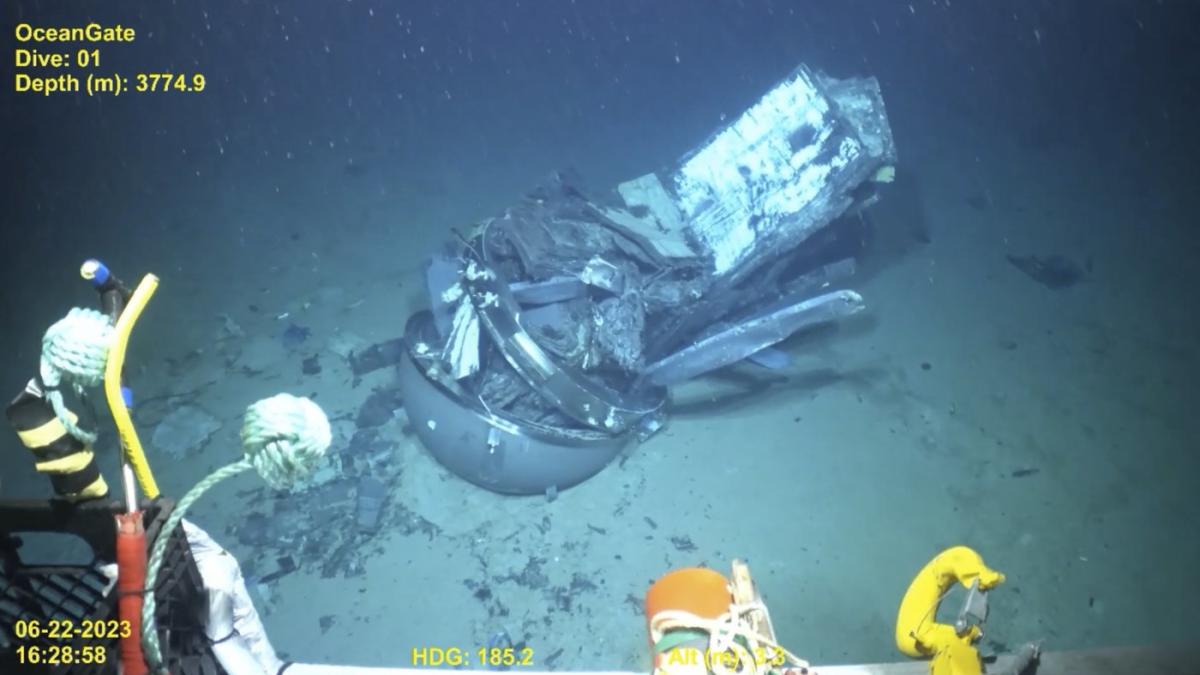Last year, five people hoping to view the Titanic wreckage died when their submersible imploded in the Atlantic Ocean. A Coast Guard panel that’s investigating the Titan submersible disaster began a second week of hearings Monday after hearing earlier testimony that raised serious questions about whether warning signs were ignored.
Here’s what witnesses have been saying so far:
Company co-founder hopeful for a renewed interest in exploration
The co-founder of the company that owned the experimental submersible that imploded en route to the wreckage of the Titanic told a Coast Guard panel Monday that he hopes the tragedy yields a renewed interest in exploration.
“This can’t be the end of deep ocean exploration,” said businessman Guillermo Sohnlein, who helped found OceanGate with Stockton Rush. He said the company was started with a laudable goal: “We wanted to give humanity greater access to the ocean, specifically the deep ocean,” Sohnlein said.
Expert says carbon fiber is susceptible to fatigue failure
Roy Thomas of the American Bureau of Shipping testified about challenges associated with carbon fiber, which was the material used for the pressure hull of the doomed Titan submersible. He noted that carbon fiber is difficult to manufacture and salt water can damage and weaken the material in multiple ways.
He said there’s no recognized standard for a submersible carbon fiber pressure hull for human occupancy and that carbon fiber is “susceptible to fatigue failure under repeated external pressurization.”
The lead engineer says he wouldn’t get in the Titan
When testifying about a dive that took place several years before the fatal accident, lead engineer Tony Nissen said he felt pressured to get the Titan ready and he refused to pilot it.
“I’m not getting in it,” Nissen said he told Rush. Nissen said Rush was difficult to work for, made demands that often changed day-to-day, and was focused on costs and schedules. Nissen said he tried to keep his clashes with Rush hidden so others in the company wouldn’t be aware of the friction.
The Titan malfunctioned a few days before its fatal dive
Scientific director Steven Ross said that on a dive just a few days before the Titan imploded, the vessel had a problem with its ballast, which keeps vessels stable. The issue caused passengers to “tumble about” and crash into the bulkhead, he said.
“One passenger was hanging upside down. The other two managed to wedge themselves into the bow,” Ross testified.
He said nobody was injured but it took an hour to get the vessel out of the water. He said he didn’t know if a safety assessment or hull inspection was carried out after the incident.
It wasn’t the first time the Titan had problems
A paid passenger on a 2021 mission to the Titanic said the journey was aborted when the vessel started experiencing mechanical problems.
“We realized that all it could do was spin around in circles, making right turns,” said Fred Hagen. “At this juncture, we obviously weren’t going to be able to navigate to the Titanic.”
He said the Titan resurfaced and the mission was scrapped. Hagen said he was aware of the risks involved in the dive.
“Anyone that wanted to go was either delusional if they didn’t think that it was dangerous, or they were embracing the risk,” he said.
One employee said authorities ignored his concerns
Operations director David Lochridge said the tragedy could possibly have been prevented if a federal agency had investigated the concerns he raised with them on multiple occasions.
Lochridge said that eight months after he filed a complaint with the Occupational Safety and Health Administration, a caseworker told him the agency had not begun investigating and there were still 11 cases ahead of his. By that time, OceanGate was suing Lochridge and he had filed a countersuit. A couple of months later, Lochridge said, he decided to walk away from the complaint. He said the case was closed and both lawsuits were dropped.
“The whole idea behind the company was to make money,” Lochridge testified. “There was very little in the way of science.”
After Lochridge’s testimony this week, the federal agency responded that, at the time, it had “promptly referred” his safety concerns to the Coast Guard.
Some people had a rosier view
Renata Rojas, a member of the Explorers Club which lost two paid passengers in the fatal dive, struck a different tone with her testimony. She said she felt OceanGate was transparent in the run-up to the dive and she never felt the operation was unsafe. A passenger on a previous dive, Rojas was volunteering with the surface crew when the Titan imploded.
“Some of those people are very hardworking individuals that were just trying to make dreams come true,” she said.
Nick Perry And Patrick Whittle, The Associated Press

